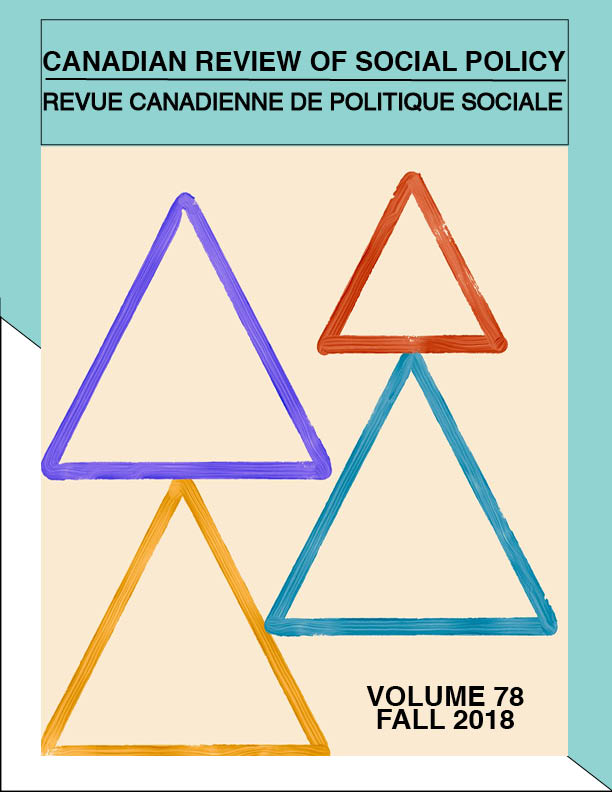Reclaiming the Spirit of Jordan's Principle: Lessons from a Canadian Human Rights Tribunal Ruling
Keywords:
First Nations, Indigenous, children’s rights, Jordan’s Principle, substantive equality, public services, Canadian Human Rights Tribunal, CHRTAbstract
Jordan’s Principle is a child-first principle designed to ensure First Nation children do not experience delays, denials, or disruptions of services ordinarily available to other children in Canada. It was envisioned as a human rights principle tailored to address the unique risks of inequitable treatment arising from the complex structure of public services for First Nations. In 2016, the Canadian Human Rights Tribunal (CHRT) found the federal government’s failure to implement Jordan’s Principle constitutes discrimination on the basis of race and/or national or ethnic origin, and ordered the federal government to cease this discrimination. In response, the First Nations Child and Family Caring Society, one of the complainants in the case and a primary champion of Jordan’s Principle, called on the federal government to implement the principle immediately in keeping with the conclusions laid out in a 2015 report by the Jordan’s Principle Working Group (JPWG, 2015). This article provides an overview of the research presented and conclusions drawn in the report, integrating analysis of the initial CHRT rulings on Jordan’s Principle and of access to information documents received in the year following release of the report. Focusing on the rulings that the CHRT issued between January and September of 2016, we highlight requirements that the CHRT ruled the federal government must fulfill, as well as additional considerations that should be taken into account in implementing Jordan’s Principle.
Résumé
Le principe de Jordan est un principe de l’enfant d’abord qui vise à assurer que tous les enfants des Premières Nations reçoivent, sans délai, refus ou perturbation, les services qui seraient habituellement à la disposition des autres enfants au Canada. Il s’agissait d’un principe des droits de la personne conçu pour remédier aux risques uniques d’un traitement inéquitable découlant de la structure complexe des services publics pour les Premières Nations. Le Tribunal canadien des droits de la personne (TCDP) a récemment conclu que la non-application du principe de Jordan par le gouvernement fédéral constituait une discrimination fondée sur la race et/ou l’origine nationale ou ethnique et a ordonné au gouvernement fédéral de mettre fin à cette discrimination. En réponse, la Société de soutien à l’enfance et à la famille des Premières Nations du Canada, l’un des plaignants dans l’affaire et l’un des principaux défenseurs du principe de Jordan, a fait appel au gouvernement fédéral afin de mettre en œuvre ce principe immédiatement, conformément aux conclusions du rapport de 2015 du groupe de travail sur le principe de Jordan. Cet article donne un aperçu des recherches présentées et des conclusions du rapport, en intégrant l’analyse des décisions du TCDP sur le principe de Jordan et les documents d’accès récemment reçus. En nous concentrant sur les décisions rendues par le TCDP entre janvier et septembre 2016, nous soulignons les exigences que le TCDP a imposées au gouvernement fédéral, ainsi que des considérations supplémentaires à prendre en compte lors de la mise en œuvre du principe de Jordan.
Mots clés: Premières Nations; autochtones; droits de l’enfant; principe de Jordan; égalité réelle; fonction publique; Tribunal canadien des droits de la personne; TCDP
Downloads
Published
How to Cite
Issue
Section
License
1-The author guarantees that the manuscript is an original work not published elsewhere in print or electronically in whole or in part, except in abstract form, that the author has the full power to make this contribution, and that the manuscript contains no matter libelous or otherwise unlawful or which invades the right of privacy or which infringes any proprietary right.
2-The author guarantees that the manuscript has not been previously published in print or electronically and that if the manuscript contains any tables, figures or images fully reproduced or closely adapted from previously published material, the author must obtain the necessary permission from the author/publisher holding the original copyright prior to publication in CRSP. The author may be required to produce evidence of permission granted to CRSP’s editors.
3-As a condition of publication in CRSP, the author assigns all copyright to CRSP, including but not limited to the right to publish, republish, and otherwise distribute this manuscript in print, electronic, or other formats. As CRSP is a non-profit interdisciplinary scholarly journal, the author will receive no royalty or other monetary compensation for the assignment set forth in this agreement.
For the purpose of full disclosure, CRSP will not normally use the content provided by the author in a commercial venture, but for the purpose of disseminating the author’s content to as many readers as possible. For distribution, third parties engaging in commercial activities may be contracted to distribute the content globally, and such parties may make a profit out of the author’s content in their normal course of business. CRSP will not pay the author or reimburse the author in any form based on such commercial activities because the conduct of such commercial activities is outside the control of CRSP.
Any future reference to or use of this published material by the authors must acknowledge CRSP as the original place of publication.
PERMISSION REQUEST/ARCHIVING
Permission is given to author(s) receiving funding via Tri-Council Agencies, the Canadian Institutes of Health Research (CIHR), the Natural Sciences and Engineering Research Council of Canada (NSERC) and the Social Sciences and Humanities Research Council (SSHRC), to make their publications freely available in an Open Access repository within the stated deadline by the Tri-Council Agencies (12 months following publication). Archiving of publication must be a manuscript copy bearing none of the CRSP headers, footers or any other distinguishing marks. No links to the article on the CRSP website is permitted.
Permission requests from third parties to reproduce articles in part or full in academic/educational publications can be directed to the managing editor of CRSP, and will not be unreasonably denied.

